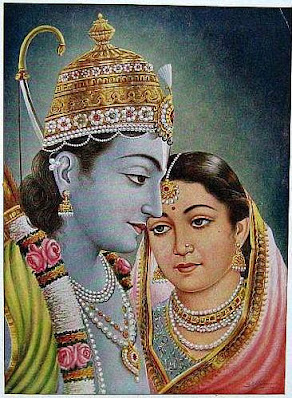|| Ramayana (रामायण) Yudh || - The Epic Battle
Ramayana (रामायण) is one of the two major Sanskrit epics of ancient India, the other being the Mahabharata. It is an ancient Hindu text that tells the story of Lord Rama and his epic journey. The Ramayana (रामायण) Yudh is one of the most important events that took place in the Ramayana (रामायण) epic. This battle was fought between Lord Rama and the demon king, Ravana. It is considered one of the greatest battles ever fought in Hindu History.
The story of Ramayana (रामायण) begins with King Dasharatha of Ayodhya who had three wives and four sons. Rama, the eldest son, was the beloved prince of Ayodhya. One day, the king promised his youngest wife, Kaikeyi, that he would fulfill two of her desires. When the king was on his deathbed, Kaikeyi reminded him of his promise and asked that her son, Bharata, be crowned as king and that Rama be sent into exile for fourteen years. Rama, who was known for his obedience and honor, accepted his fate and left Ayodhya with his wife Sita and brother Lakshmana.
While in exile, Sita was kidnapped by the demon king, Ravana, who had ten heads and twenty arms. Rama and Lakshmana set out to rescue Sita and defeat Ravana. Along the way, they made many allies, including the monkey king Hanuman, and eventually reached Lanka, where Sita was being held captive.
The Ramayana (रामायण) Yudh was a fierce battle between Lord Rama and Ravana, who was considered one of the most powerful demons in Hindu mythology. The battle lasted for many days and resulted in the death of many warriors on both sides. Finally, Rama was able to defeat Ravana and rescue Sita.
In Hinduism, the battle of Ramayana (रामायण) Yudh is seen as a symbol of the eternal struggle between good and evil. It teaches that even though the forces of evil may appear powerful and unbeatable, they will eventually be defeated by the forces of good. The story of Ramayana (रामायण) also teaches us the importance of loyalty, obedience, and honor.
The Ramayana (रामायण) Yudh is also considered a significant event in Hindu astrology. The battle is said to have occurred during the Treta Yuga, considered the second of the four yugas in Hindu mythology. The Treta Yuga is believed to be a time when the forces of good and evil were in a constant battle and the victory of Lord Rama in the Ramayana (रामायण) Yudh symbolizes the triumph of good over evil during this time.
In conclusion, the Ramayana (रामायण) Yudh is a timeless story that continues to inspire and influence people even today. Its teachings and lessons remain relevant, and the level of Lord Rama and his epic journey remains an integral part of Hindu mythology.
Here are ten relevant chaupai from Ramcharitmanas that showcase the significance of Ramayana (रामायण) Yudh:
"Sakal jagat mein rahi hai Rama-naam." - The name of Rama is known throughout the world.
"Lanka ko lootne wale Raghunath hain." - The one







